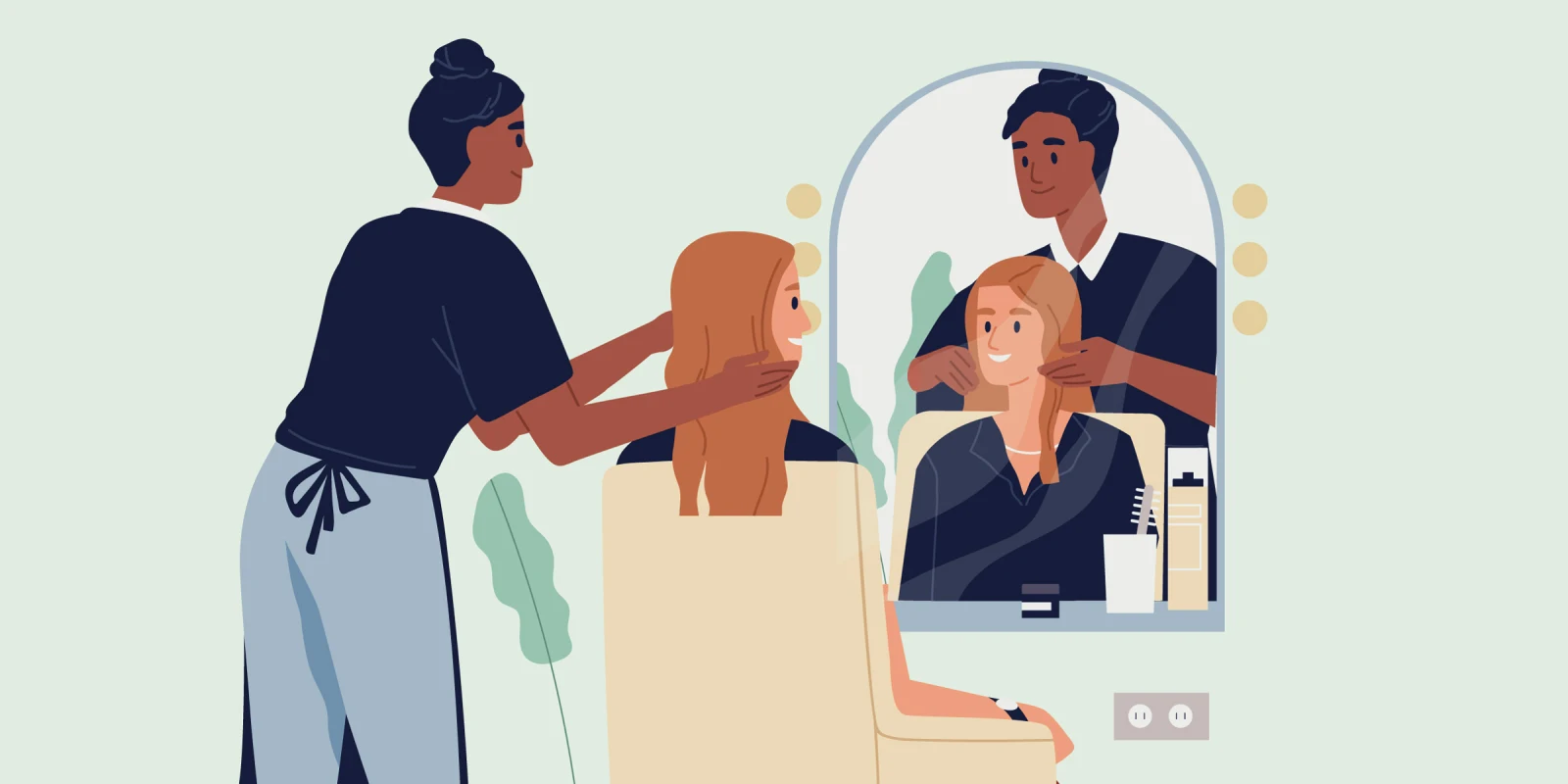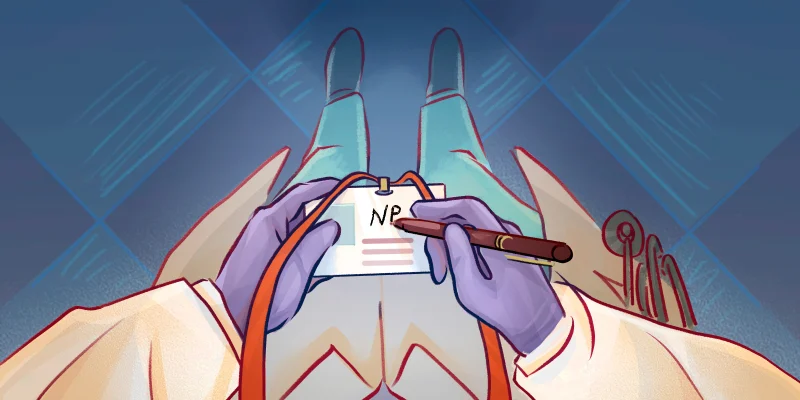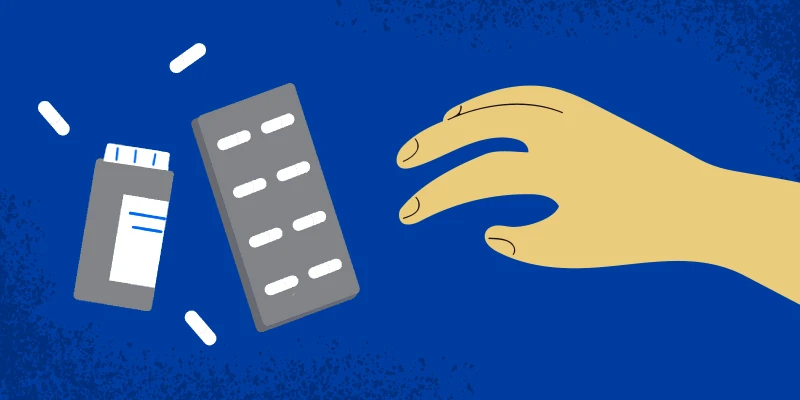For many years, I dreaded getting my hair cut. I hated the wait, the stilted conversation, the sitting still when I had other things that I needed to do. I especially hated the judgment I often received in the stylist’s chair. My hair wants to be a dry frizzball, and I have never developed the skills to tame it. Stylists would ask what products I used, and whatever I said, it would be the wrong one. They asked what type of brush, and it would be the wrong shape or material. They would tut about my split ends and sell me a super-potent conditioner that the next time they would say is not as good as some new product that I needed to buy. I would ask for my hair to be cut simply and blown out straight, and somehow I would often come out with a weird fringe or a cartoonish flip. If I did find someone who did a decent job, after a few cuts they would disappear.
Worse than the frizz, I started noticing my first few gray hairs in med school. It was cute for a few years in residency when I had a single silver streak. Then the grays started taking over. My mom and an occasional patient would tell me I was too young to look like this and I needed to dye it. I decided that I didn’t care and anyway, I was too busy to deal with it. Then my son came home from first grade with a Mother’s Day card that said “My Mommy is a doctor. Her eyes are blue. Her hair is gray.” Ick! My vanity finally took over and that’s when I found a new hair salon and met Michele.
Michele is an artist with scissors and a blow dryer, a wizard with dyes, and best of all, someone who I genuinely enjoy being around and who makes me feel good about my hair. Many times through the years that followed, I have sat sipping a glass of white wine, letting my color process, and thinking of ways my clinic and my exam room could be more like the experience of a great hair salon.
The good experience starts well before I reach the stylist’s chair: When I call, they answer the phone — a real person! — within a few rings. When I show up, they greet me warmly by name. They never leave me waiting more than a few minutes past my appointment time.
I hate when my patients judge me for failing on these kinds of things that are largely out of my control, but yes, they matter. Of course they do; how can a patient believe they will be treated with respect and dignity by their clinician if they are treated like a nuisance out in the waiting room?
When Michele comes over, it’s with a big smile and a “Hey, girlfriend!” She makes sure I am comfortable as she helps me into a robe, shows me where to put my handbag and glasses, and offers me a drink of water. She asks me what’s new. Similarly, I try to put my patients at ease despite the awkward context of a doctor’s visit. I start with a friendly greeting (though sadly, I have given up on handshakes since the pandemic.) If a patient needs to undress, I give specific instructions on what articles of clothing to remove, if the gown should open in the front or the back, and offer a bariatric-sized gown if appropriate.
Michele chats me up and assesses my hair, then goes off to mix my color potion. She tells me how long she will be gone and what to expect during all the stages of the visit. An assistant may appear when needed to help with the color or rinse my hair. At my clinic, I strive to tell patients what to expect and how long they will need to wait if I am ordering an in-clinic test. The goal is for friendly and seamless handoffs with the medical assistant, phlebotomist, or anyone else who needs to help with that day’s care.
At the salon, I always feel like the center of attention. Even if Michele is having a side conversation with one of her colleagues, she always brings it back to me. “Hey, Melissa, do you like this song, too?” I have had bad haircuts where the whole staff is so eagerly debating what to order for lunch that I felt invisible and not sure if my layers would be even. Of course, the biggest interlopers in a patient exam room are my computer and my cell phone. It’s so important to keep as much eye contact with the patient as I can. I try my hardest to ignore incoming texts and messages, and to explain to the patient when I need to turn away. “I am entering your prescription,” “I am trying to find your most recent echocardiogram report” or “I am turning on my phone so I can use it as a stopwatch for this part of the cognitive exam.”
But what really sets Michele apart, and the thing I most want to emulate, is her radiant attitude. She does not berate me for using the wrong products, or for how long it’s been since my last cut. She just tells me how great I will look when she’s done.
At the doctor’s office, especially in primary care, it’s always a fine line between pushing our patients to do better and scaring them away by making them feel judged. Through the years, I have had patients tell me they left their former clinician because they “yelled at me about my diabetes” or “they were mad that my blood pressure was too high.” It’s easy for a visit to focus on the negatives when our visits are centered on a list of “problems.” I see the patient and I think, Your weight is up, bp is up, those recent labs didn’t look so good. Did you stop taking your statin? I try to say something positive before getting into the issues that need to be addressed. “Wow, your A1c came down. That’s fabulous!” I look for little wins to celebrate. Then I educate and gently prod toward a plan. I always try to end the visit on a positive note. The patient should leave feeling encouraged and optimistic.
When I leave Michele’s salon, I feel great. “Look at you! This color is gorgeous!” she will crow. And I will believe her, even if she said the same thing, praising a slightly different tint, last time. Similarly, I root for my patients. “I think we have a great plan! You’ll cut back on the salt, and the new medicine should help a lot. I bet your blood pressure will be perfect next time!”
It's hard to be a cheerleader all day, but if Michele can do it, so can I. I may not have the pom-poms, but at least I have a cheerleader’s stunning hair.
What other industries can doctors learn from?
Melissa Schiffman, MD is a community-based primary care physician who practices in Suburban Philadelphia. She enjoys books, birds, gardens, and word nerdery. Her favorite medical term is "borborygmi." Find her on Twitter at: @MSchiffmanMD. Dr. Schiffman is a 2022–2023 Doximity Op-Med Fellow.
Image by GoodStudio / Shutterstock







